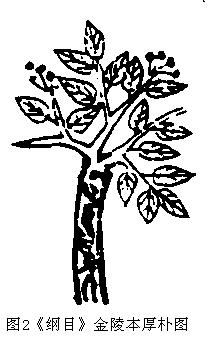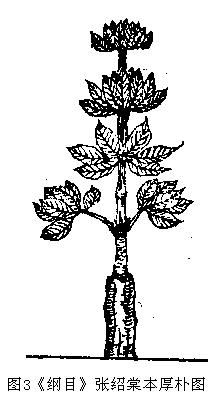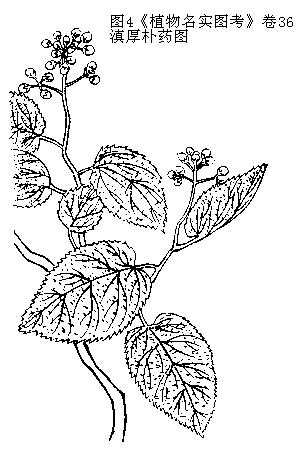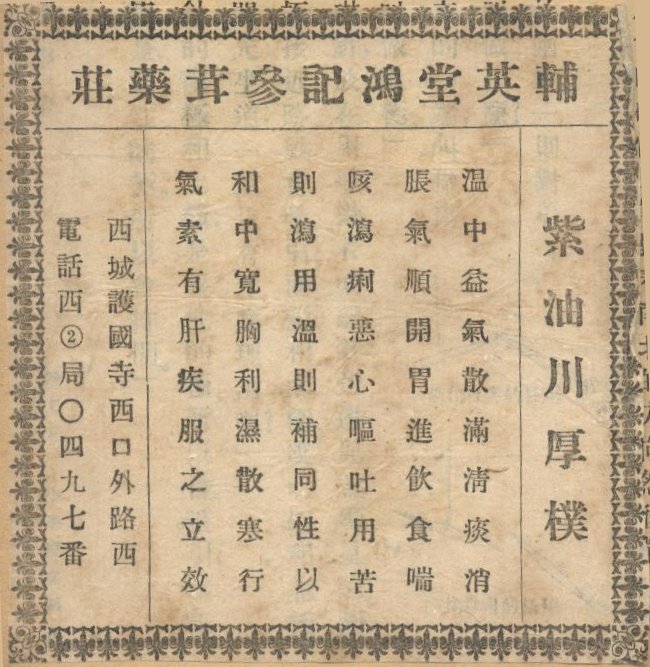| title | Magnolia Bark, Officinal Magnolia Flower |
| release time | 2006/3/4 |
| source | Jade Knock Studio |
| keyword | Magnolia Bark, Officinal Magnolia Flower |
Magnolia Bark is the dried bark, root bark, and branch bark of the Magnoliaceae plant Magnolia officinalis Rehd. et Wils. or the concave-leaved Magnolia officinalis Rehd. et Wils. var. biloba Rehd. et Wils. The officinal magnolia flower is the dried flower bud of these two plants. Among them, Magnolia Bark is mainly produced in Sichuan, Hubei, Hunan, and Guizhou provinces, with significant production in Guangyuan, Yingjing, Fengdu, and Chengkou in Sichuan, and Enshi, Yichang, and Lichuan in Hubei. It is commonly known as "Chuan Po" in the market, also referred to as "Purple Oil Magnolia Bark," and is considered to be of superior quality. The concave-leaved Magnolia Bark is mainly produced in Longquan and Suichang in Zhejiang, Pucheng and Songxi in Fujian, and is also produced in Jiangxi, commonly known as "Wen Po" in the market.
Materia medica research suggests that since the Bencao Jing Jizhu, plants of the Magnolia genus in the Magnoliaceae family have been the mainstream source of medicinal Magnolia Bark, but the varieties may not completely match those used today. The medicinal history of Sichuan-produced Magnolia Bark can be traced back to the Tang Dynasty, and based on its distribution, it is likely Magnolia officinalis. The Magnolia Bark recorded in the local chronicles of Zhejiang during the Southern Song Dynasty may be the concave-leaved Magnolia Bark, and there was significant production in Fujian during the Ming and Qing periods.
bubble_chart Varietal Identification
Magnolia Bark is recorded in the Bencao Jing under the category of middle-grade wood. The "Shuowen" states, "thick, heavy," and "Po, tree bark," hence Bielu refers to it as "thick skin," and the "Guangya" calls it "heavy skin." In the "Jijiu Pian," the sentence "Sichuan Lovage Rhizome Magnolia Bark Gua Lou" is annotated by Yan Shigu: "Magnolia Bark, also known as thick skin, and red Po. All tree barks are called Po, but this tree's bark is thick, hence the name Magnolia Bark." Bielu records two production areas: Jiaozhi and Yuanju, with Yuanju located in present-day Heze, Shandong. There are no records of Magnolia officinalis distribution in Shandong, possibly referring to other plants. Notably, Bielu also mentions that the tree is called "Zhen," and its fruit is called "Zhu Zhe," stating the efficacy of Zhu Zhe: "treats rat fistulas, improves vision, and tonifies qi." In the "famous but unused" section of Bielu, Zhu Zhe is mentioned again: "Zhu Zhe, kills rats, tonifies qi, improves vision. Also known as Lily Bulb, thick and solid. Grows among trees, stem yellow, fruit black in July, like soybeans." Comparing the efficacies, the "Zhu Zhe" in both places should be the same thing, but Tao Hongjing's annotation in the "famous but unused" section states: "Eucommia Bark seeds are also called Zhu Zhe." It is unclear whether the text about Zhu Zhe was mistakenly included in the Magnolia Bark entry or if the Magnolia Bark used in the Han Dynasty was actually the bark of the birch family plant Zhen. However, Bielu's description of Zhu Zhe's "black fruit like soybeans in July" suggests it is not a Magnoliaceae plant.
The description in the "Jizhu" is closer to the current species. Tao Hongjing states: "Magnolia Bark comes from Jianping and Yidu, extremely thick, with purple flesh being good, thin and white shell being poor." This is consistent with the purple and oily Magnolia Bark produced in Sichuan and Hubei, likely the genuine Magnolia officinalis.The Bencao Tujing states: "The tree is three to four zhang tall, with a diameter of one to two chi. In spring, it produces leaves similar to those of the oak, which do not wither throughout the four seasons. Carthamus and green fruits, the bark is extremely scaly and thick, with a purple color and much moisture being the best; thin and white bark is inferior." According to Su Song's description, "In spring, it produces leaves similar to those of the oak," and "Carthamus and green fruits, the bark is extremely scaly and thick," it seems to be the same species as Magnolia sprengeri Pamp. The "Zhenglei" depicts Magnolia Bark from Shangzhou and Guizhou. The Magnolia Bark from Shangzhou has large and conspicuous lenticels, large leaves that are falsely whorled at the branch tips, large flowers that are solitary at the tips of young branches, and separate tepals and carpels, which can generally be identified as the genuine Magnolia Bark. As for the Magnolia Bark from Guizhou, based on its leaf shape, leaf arrangement, and branching pattern of the stem, it seems to be a plant of the Manglietia genus rather than the Magnolia genus. These plants are referred to as "local Magnolia Bark" in volume 38 of the Zhiwu Mingshi Tukao. Wu Qijun states: "Local Magnolia Bark grows in Jianchang (now Nancheng, Jiangxi), and it is also a large tree. The leaves are opposite, with thick petioles, nearly a chi long, green on the surface and white on the back, quite brittle, with young leaves at the branch tips curled like a brush. It tastes pungent and has a fragrant aroma. Locals use it as a substitute for Magnolia Bark, and it is also effective." According to his depiction, it is similar to Manglietia yuyuanensis Law.




Although the records of the original plants of Magnolia Bark in Ming and Qing materia medica are varied, we do not believe that there was much confusion about the actual source of Magnolia Bark at that time. After all, since Tao Hong-jing, Magnolia Bark has been emphasized for its thick bark with purple flesh and strong oiliness, as stated in the "Processing Theory": "When using, it is best to have purple color and a pungent taste." The magnolol contained in genuine Magnolia Bark has the effect of regulating gastrointestinal movement, and its volatile oil has a significant stomach-strengthening and wind-dispelling effect. These effects are very consistent with the Chinese medicine theory of Magnolia Bark regulating qi to break accumulation, and are difficult to replace by other plants. Therefore, Magnolia species may have always been the mainstream in medicinal use, while the bark of other genera in the same family, or plants from other families, have only been used as adulterants or local substitutes, and have never become the genuine medicinal product.
As for the officinal magnolia flower, it is a medicinal material used in recent times, generally believed to have been first recorded in 1935 by Wang Yiren in "Yinpian Xincan," stating that it has a slightly bitter taste, warm nature, and functions to "relieve chest tightness and transform dampness turbidity in the spleen and stomach." According to the "Medicinal Trade Regulations" of the National Medicinal Trade Association in Xijing City (Xi'an), Shaanxi Province, in the 29th year of the Republic of China (1940), there is also an entry for officinal magnolia flower, which records its medicinal properties as bitter, pungent, and neutral, with the efficacy of "harmonizing the spleen and stomach, relieving diaphragm and broadening the chest." The inner labels of officinal magnolia flower Chinese medicinals from similar periods indicate its nature and flavor as pungent and bitter, and its main treatments as "dispersing dampness, regulating the stomach, resolving stasis, transforming food, and treating vomiting, diarrhea, and dysentery."bubble_chart Historical Evolution of Authentic Sources
The "Fanzi Jiran" states that Magnolia Bark comes from Hongnong, and the "Bielu" mentions: "It grows in Jiaozhi and Yuanju," where Jiaozhi is located in present-day Vietnam, and Yuanju refers to Heze in Shandong today. Whether the variety is the same as the one used today cannot be confirmed.
The "Jizhu" states: "Magnolia Bark comes from Jianping and Yidu," which are located at the border of Chongqing and Hubei. The "Qianjin Yifang" records that Magnolia Bark is produced in Shangzhou, which is present-day Shang County in Shaanxi. The "New Book of Tang: Geography" records that Longzhou tributes Magnolia Bark, with Longzhou being present-day Pingwu County in Sichuan. The "Yunxian Miscellaneous Records" from the late Tang Dynasty, Volume 6, quotes the "Qiongyou Ji": "Magnolia Bark from Sichuan, if collected after drinking, the purple color disperses, and it becomes ineffective." This clearly indicates that Sichuan-produced Magnolia Bark is superior, but unfortunately, the specific production area is not noted.
In the Song Dynasty, the medicinal use of Magnolia Bark, as described in the "Tujing," seems to regard Wudang Magnolia as the genuine product. Su Song said: "Nowadays, it is often found in the valleys of Jingxi, Shaanxi, Jianghuai, Hunan, and Sichuan, with those from Zizhou and Longzhou being the best." The "Yanyi" also emphasizes that the best comes from Santai (Zizhou) in Sichuan: "Nowadays, it is also found in Yiyang County of Xijing and Shangzhou, but it is thin and pale in color, not as thick and purple with oil as that from Zizhou."

Ancient literature's descriptions of the plant morphology of Magnolia Bark are relatively rough, and even when the authors personally inspected the plants, they sometimes still followed the erroneous descriptions of their predecessors. The main difference between the genuine Magnolia Bark used today and its variant, the bilobed Magnolia Bark (Magnolia officinalis var. biloba), lies only in the concave notch at the leaf tip forming two blunt round shallow lobes. Therefore, the situation regarding bilobed Magnolia Bark can only be roughly speculated based on production area records. The "Huiji Continued Records" from Zhejiang in the Southern Song Dynasty, Volume 4, states: "Magnolia Bark comes from Shanzhong, the 'Pingquan Grass and Tree Records' mentions the Torreya and Juniper of Jishan, and the Magnolia Bark of Shanxi." This seems to match the production area of bilobed Magnolia Bark. Additionally, the "Fujian Tongzhi" from the Qing Dynasty records Magnolia Bark in the Jianning Prefecture (present-day Jian'ou), and the "Pucheng County Records" from the Ming Wanli and Qing Jiaqing periods also record Magnolia Bark production in present-day Pucheng County, Fujian, suggesting that the variety should also be bilobed Magnolia Bark.
bubble_chart Other Related Items

